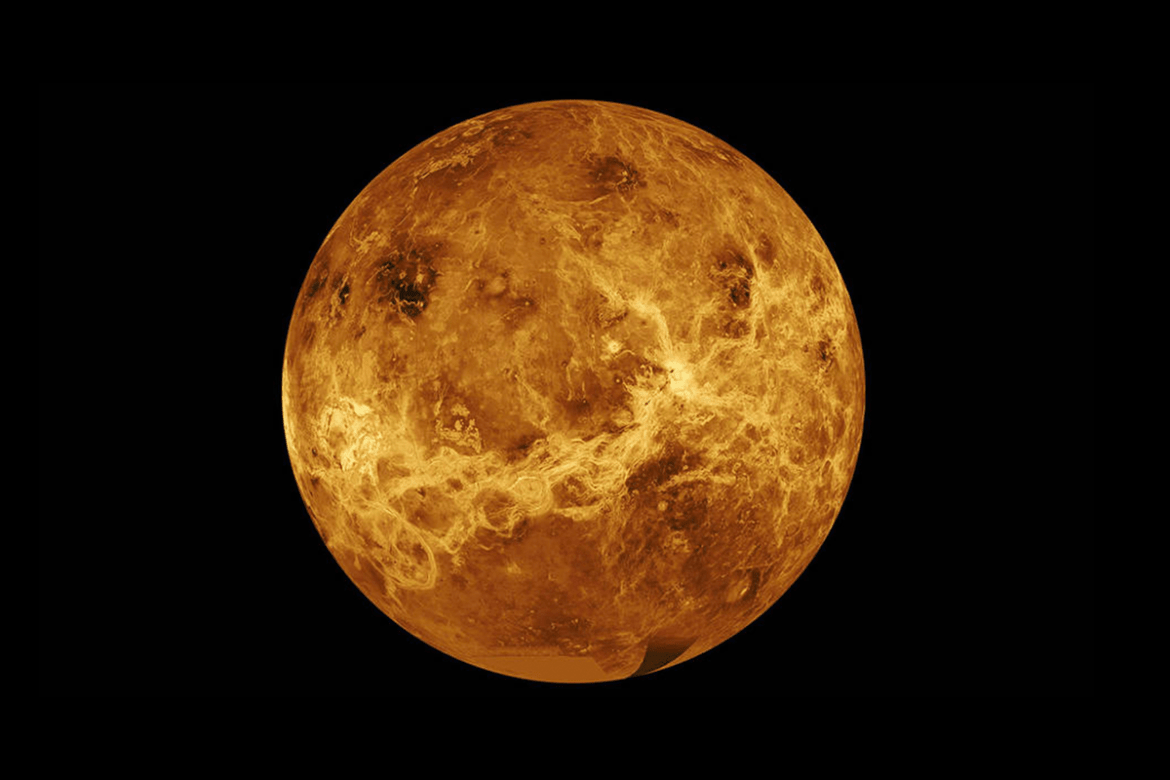In Venus, VERITAS

NASA has selected new missions to explore Venus, including one led by M. Darby Dyar, Mount Holyoke professor of astronomy.
NASA has selected new missions to Venus, Earth’s nearest planetary neighbor. Part of NASA’s Discovery Program, the missions aim to understand how Venus became an inferno world when it has so many other characteristics similar to ours — and may have been the first habitable world in the solar system, complete with an ocean and Earth-like climate.
One of the selected missions is VERITAS (Venus Emissivity, Radio Science, InSAR, Topography, and Spectroscopy). The deputy principal investigator for VERITAS is Mount Holyoke Kennedy-Schelkunoff Professor of Astronomy M. Darby Dyar.
VERITAS will map Venus’ surface to determine the planet’s geologic history and understand why it developed so differently than Earth. Orbiting Venus with a synthetic aperture radar, VERITAS will chart surface elevations over nearly the entire planet to create 3D reconstructions of topography and confirm whether processes such as plate tectonics and volcanism are still active on Venus.
“Forty years ago I was a graduate student at MIT studying planetary science. One morning I came into the office to find graduate students crying in the hallways. NASA had just cancelled a flagship mission to Venus — the Reagan administration had decided it was too expensive. So I set my sights on studying lunar, and later Martian, samples. But I never lost my passion for Earth’s mysterious twin,” said Dyar. “Fast forward 30 years, and I met a German scientist, Joern Helbert, who was building a lab to make spectral measurements at Venus surface temperatures. He asked if I wanted to collaborate, and my answer was an enthusiastic yes!
“Since then, I've been laying the groundwork for understanding the geology of the Venus surface from an orbiter by using a special spectrometer designed to peek through its CO2-rich clouds. For the past decade, I have been working with scientists and engineers at NASA’s Jet Propulsion Laboratory in Southern California to develop four Venus mission concepts. The principal investigator, Suzanne Smrekar, is an amazing scientist and it’s been an honor to work with her and others to develop this mission. It’s a joy that this orbital mission, which presents awesome science, has finally been selected by NASA.
“When I heard the news that VERITAS had been selected, I cried and got goosebumps. It’s amazing when you work on something for more than 10 years and it finally comes to fruition,” Dyar said. “I am raring to go — we know exactly what we want to do, and how we will do it! I can’t wait to jump into the next steps.”
VERITAS also will map infrared emissions from the surface of Venus to map its rock type, which is largely unknown, and determine whether active volcanoes are releasing water vapor into the atmosphere.
“We’re revving up our planetary science program with intense exploration of a world that NASA hasn’t visited in over 30 years,” said Thomas Zurbuchen, NASA’s associate administrator for science. “Using cutting-edge technologies that NASA has developed and refined over many years of missions and technology programs, we’re ushering in a new decade of Venus to understand how an Earth-like planet can become a hothouse. Our goals are profound. It is not just understanding the evolution of planets and habitability in our own solar system, but extending beyond these boundaries to exoplanets, [which is] an exciting and emerging area of research for NASA.”
“It is astounding how little we know about Venus. The combined results of these missions will tell us about the planet from the clouds in its sky through the volcanoes on its surface all the way down to its very core,” said Tom Wagner, NASA’s Discovery Program scientist. “It will be as if we have rediscovered the planet.”
These investigations are the final selections from four mission concepts NASA picked in February 2020 as part of the agency’s Discovery 2019 competition. Following a competitive, peer-review process, the missions were chosen based on their potential scientific value and the feasibility of their development plans. The project teams will now work to finalize their requirements, designs and development plans.
NASA is awarding approximately $500 million per mission for development. Each is expected to launch in the 2028–2030 timeframe.
Established in 1992, NASA’s Discovery Program has supported the development and implementation of over 20 missions and instruments. These selections are part of the ninth Discovery Program competition.
The selected investigations will be managed by the Planetary Missions Program Office at NASA’s Marshall Space Flight Center in Huntsville, Alabama, as part of the Discovery Program. The Discovery Program conducts space science investigations in the Planetary Science Division of NASA’s Science Mission Directorate. The goals of the program are to provide frequent opportunities for principal investigator-led investigations in planetary sciences that can be accomplished under a not-to-exceed cost cap.
More information about NASA’s planetary science is available.